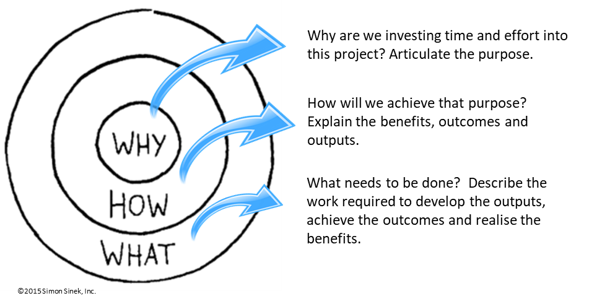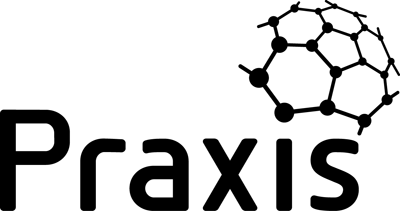The ‘Golden Circle’ is the subject of a seminal TED talk by Simon Sinek1. While it is primarily aimed at helping organisations communicate their purpose more effectively, there are useful lessons for every project manager.
As project managers we know that there are many team members and stakeholders with whom we need to communicate. It can be tempting to start these communications with what we aim to do and then move on to how we intend to do it. Sometimes we might even get around to why we are doing this but that can often get relegated or even omitted from communications.

Ironically, if we are following a well proven life cycle process such at the Praxis method, we will actually produce information in the order of why, how and what. The mistake is to then communicate that information in the reverse order.
-
WHY?
-
People may enjoy what they do and how they do it but real commitment comes from why they are doing it. Your team and stakeholders will inevitably come up against problems and difficulties that need to be overcome. The enthusiasm and determination to work though these comes not from an understanding of how or what but from a belief in why.
-
Why the project exists should be clearly stated in the business case. Make sure you continually reinforce that message and revisit it as necessary. Naturally, day to day control of the project will focus on how and what and this can make the memory of why quickly fade. Take every opportunity to reinforce why we are doing this work.
-
HOW?
-
Asking the question why will lead to the development of ideas for outputs, outcomes and benefits (the objectives). These objectives are how we will fulfil the purpose of the project. They will be explained in documents such as specifications and benefit profiles.
These will also be regularly revisited to make sure they still fulfil the purpose of the project. Remember, objectives are a means to achieve the answer to the fundamental question – why?
-
WHAT?
-
What we need to do to deliver the objectives is contained in our plans and schedules. These are the most dynamic documents and are reviewed regularly and frequently. Most of our day to day communication revolves around these.
After the initial articulation of why the project exists, it is natural that most of the focus will be on how and what. That’s perfectly reasonable. The point of this article is just to point out that you should look for opportunities to reinforce people’s understanding of the why, because that’s what will motivate them to keep going when things get tough.





